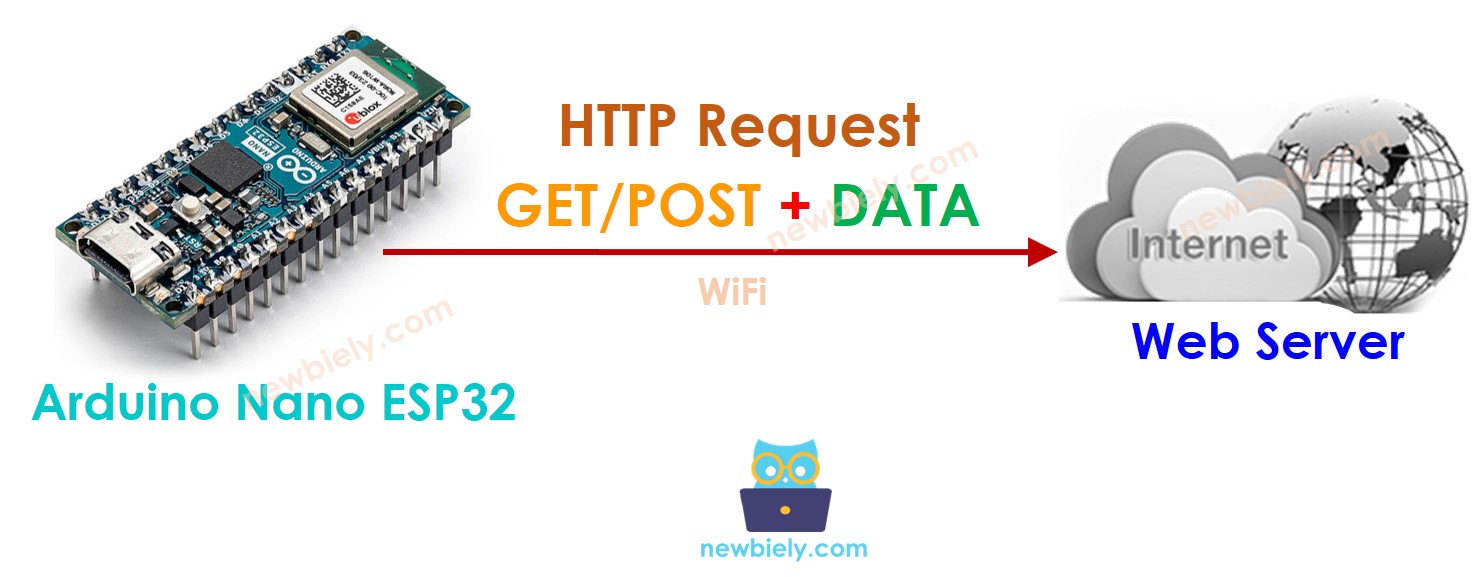Arduino Nano ESP32 - Requête HTTP
Ce tutoriel fournit des instructions sur comment utiliser l'Arduino Nano ESP32 pour effectuer une requête HTTP à un serveur web, une API ou un service Web. En détail, vous apprendrez :
- Comment utiliser Arduino Nano ESP32 pour effectuer une requête HTTP (GET et POST)
- Comment inclure les données du capteur dans la requête HTTP

Préparation du matériel
Ou vous pouvez acheter les kits suivants:
| 1 | × | Kit de Capteurs DIYables (30 capteurs/écrans) | |
| 1 | × | Kit de Capteurs DIYables (18 capteurs/écrans) |
Concepts de base du client Web et du serveur Web
Il existe quelques concepts de base du web tels que : adresse web (URL), nom d'hôte, chemin d'accès, chaîne de requête, requête HTTP... Vous pouvez en apprendre davantage à leur sujet dans le tutoriel HTTP
Comment effectuer une requête HTTP
- Inclure des bibliothèques
- Déclarer le SSID et le mot de passe du WiFi
- Déclarer hostname, pathname, chaîne de requête
- Déclarer un objet client HTTP
- Si connecté au serveur, et envoyer une requête HTTP. Par exemple, HTTP GET.
- Lisez les données de réponse du serveur web.
Comment inclure des données dans une requête HTTP
Nous pouvons envoyer des données au serveur web en incluant des données dans la requête HTTP. Le format des données dépend de la méthode de requête HTTP :
- Pour une requête HTTP GET
- Les données peuvent être envoyées uniquement dans la chaîne de requête du chemin.
- Requête HTTP POST
- Les données peuvent être envoyées NON SEULEMENT dans le format de la chaîne de requête MAIS AUSSI dans tout autre format tel que Json, XML, image...
- Les données sont placées dans le corps de la requête HTTP.
- Créer une chaîne de requête
- HTTP GET : ajoutez chaîne de requête au chemin d'accès
- POST HTTP : mettre la chaîne de requête dans le corps HTTP
- Pour les méthodes GET et POST, lire les données de réponse du serveur web.
Apprenons à envoyer des données au format de chaîne de requête pour les méthodes HTTP GET et POST.
Code Arduino Nano ESP32 complet pour effectuer une requête HTTP
Le code Arduino Nano ESP32 complet pour effectuer une requête HTTP GET/POST est le suivant :
